Introduction: 10 Weird Inventions
Human ingenuity is a double-edged sword—it leads to groundbreaking advancements and, sometimes, downright weird inventions. These peculiar creations, often dismissed as bizarre or impractical, reflect the boundless curiosity that drives humanity whether solving problems no one thought existed or challenging conventional thinking, weird inventions play a unique role in innovation.

From historic oddities like the Dynasphere to more recent curiosities like the Radio Hat, these creations remind us that the line between genius and absurdity is thin. They’re not just quirky footnotes in history but also sources of inspiration for modern breakthroughs. Let’s explore ten such weird inventions that leave us amazed, amused, and sometimes scratching our heads.
The Dynasphere: The One-Wheel Wonder (1930s)
The Dynasphere, or monowheel, was one of the most fascinating weird inventions from the past, designed to challenge the conventional concept of personal transport. Invented by Dr. J.A. Purves, the massive one-wheeled vehicle was inspired by the wheel’s simplicity and efficiency.
The Dynasphere was built with a massive outer ring, within which a smaller cabin held the driver and passengers. Its motor powered the wheel, making it roll forward. While visually striking, this bizarre contraption was fraught with engineering challenges. The rider had to sit within the wheel, making visibility limited, and its stopping mechanism was highly unreliable.
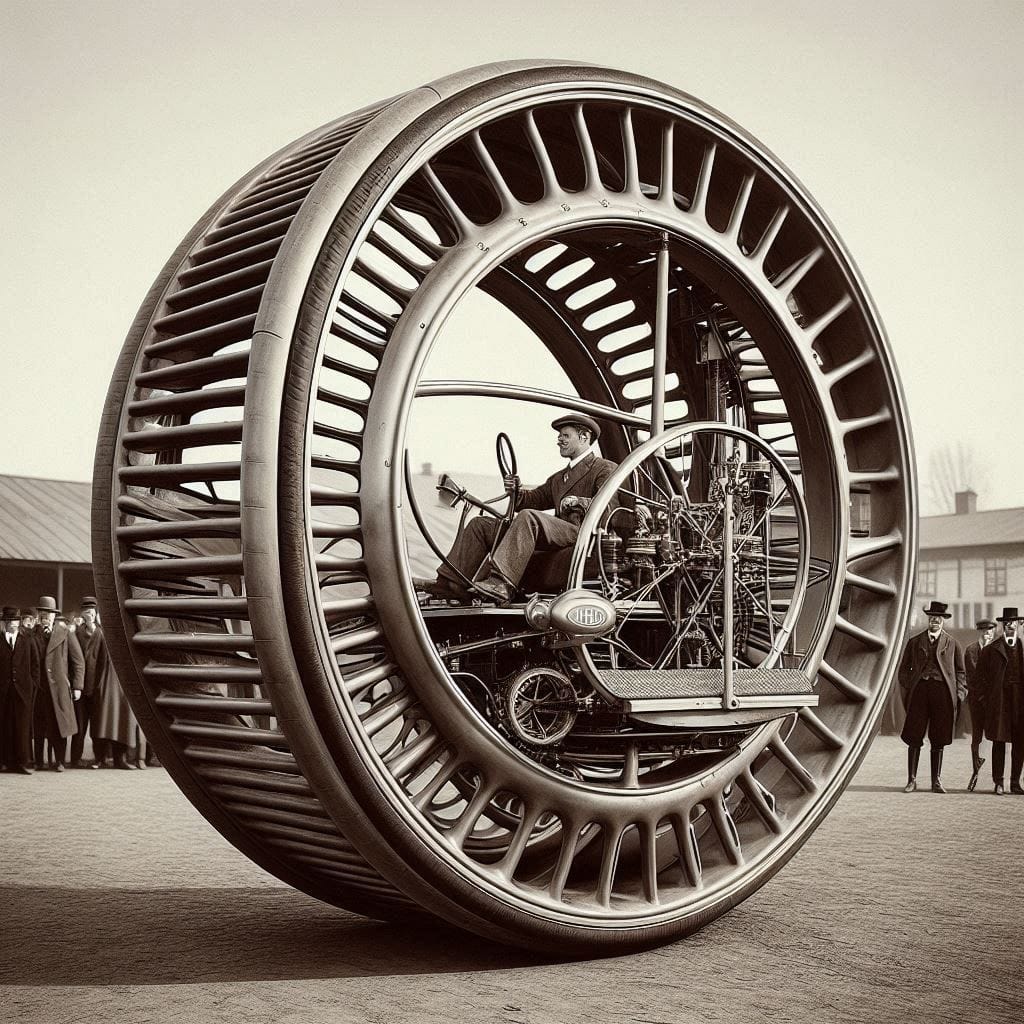
The Challenges of Balance and Control
One of the most glaring flaws of the Dynasphere was its stability—or lack thereof. Maintaining balance in a single-wheeled structure posed significant challenges, particularly during turns. Additionally, its cumbersome size made it unsuitable for crowded streets or narrow roads.
Historical Context and Purpose
Dr. Purves envisioned the Dynasphere as a futuristic alternative to cars. His invention came at a time when the automotive industry was rapidly evolving, and inventors were eager to explore unconventional designs. However, its impracticality meant that it never reached mass production.
Legacy and Influence
Despite its failure, the Dynasphere remains an iconic example of unusual historical inventions. Its design continues to inspire modern experiments with monowheels, including recreational vehicles and sci-fi-inspired transportation prototypes.
The Radio Hat: Early Wearable Tech (1949)
The Radio Hat was a product of the post-war era’s fascination with technology. Introduced in 1949 by the American inventor Victor T. Hoeflich, this quirky gadget combined fashion and functionality. Marketed as a portable solution for on-the-go radio listeners, it quickly became one of the most memorable weird inventions that actually exist.
The Radio Hat was essentially a pith helmet fitted with a built-in AM radio. It had small antennas protruding from the top and a battery pack attached to the back. Despite its innovative concept, the design was clunky, and its performance often left users underwhelmed.
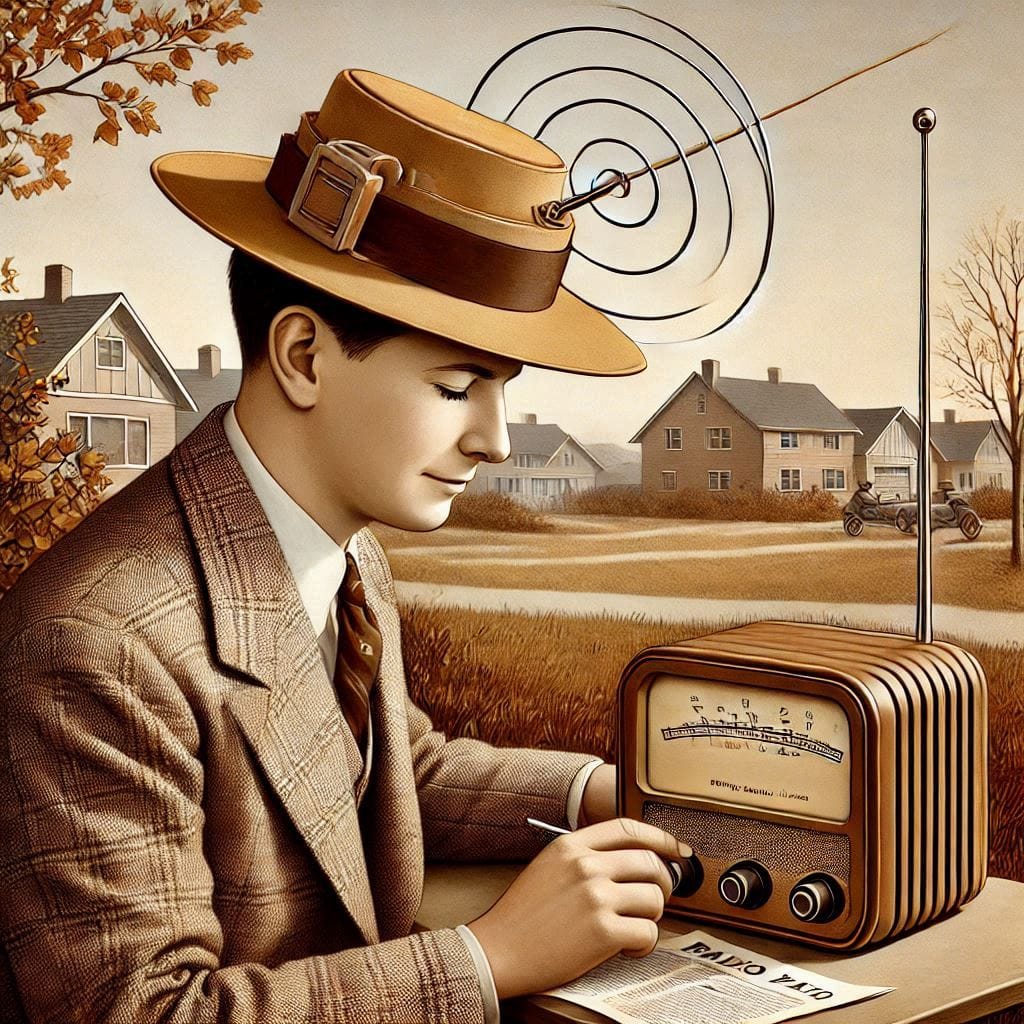
While the idea of wearable tech is commonplace today, the Radio Hat stood out for its unusual appearance. Its exposed wires and clunky construction made it more of a novelty than a practical accessory. Still, it captured the imagination of a public eager for futuristic gadgets.
Cultural Context and Impact
At the time of its release, the Radio Hat was marketed as affordable wearable tech for teenagers. Priced at just $7.95, it was a symbol of modernity and technological optimism in a rapidly changing world. However, as more portable radios became available, the Radio Hat was soon relegated to the realm of forgotten inventions from history.
Modern Relevance
The Radio Hat is now recognized as a precursor to wearable technologies like Bluetooth headsets and smart glasses. While it may seem like one of the more strange 20th-century gadgets, it laid the groundwork for the idea of integrating technology into everyday accessories.
Baby Cages: Fresh Air at a Price (1930s)
In 1930s urban settings, limited access to outdoor spaces led to the development of the baby cage. This peculiar invention aimed to provide infants with fresh air, even if their families lived in high-rise apartments. The cages, which were suspended outside windows, became a controversial yet fascinating chapter in child-rearing history.
The baby cage was a wire-framed enclosure attached to a window frame, allowing babies to nap or play outdoors without leaving the apartment. Advocates believed it promoted health by ensuring access to sunlight and fresh air. However, the sight of babies dangling several stories above the ground was enough to unsettle many.
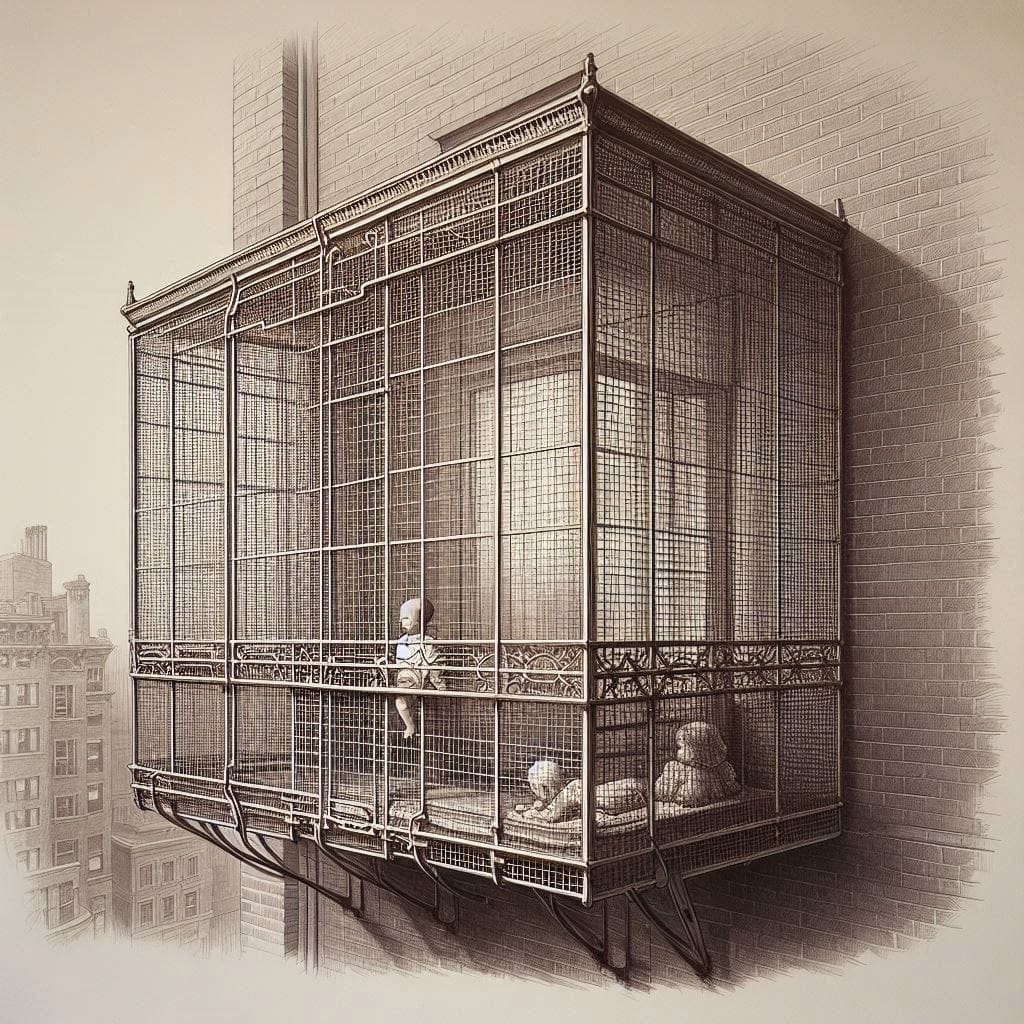
The baby cage is undoubtedly one of the most unsettling bizarre contraptions of its time. Safety concerns were widespread, and many questioned the ethics of placing children in such precarious positions. The invention emerged in London during a time when urban families faced severe space constraints. With no backyards or balconies, parents sought creative ways to give their children a taste of the outdoors. However, public backlash and safety regulations eventually led to its decline.
Legacy and Lessons Learned
Though no longer in use, the baby cage served as an important lesson in urban design and child safety. It highlighted the need for better infrastructure and open spaces in cities. As one of the more unconventional breakthroughs, it also showcased the lengths to which parents would go to ensure their children’s well-being.
Flying Umbrellas: Hands-Free Weather Protection
The Flying Umbrella is a standout among the Top 10 weird inventions, combining cutting-edge drone technology with everyday functionality. Designed to provide hands-free rain protection, this quirky gadget hovers above its user, shielding them from the elements while allowing full mobility.
How It Works
The Flying Umbrella is essentially a drone outfitted with a waterproof canopy. It uses sensors and GPS technology to follow the user, adjusting its position to maintain optimal coverage. Powered by a rechargeable battery, it can operate for several hours before requiring a charge.
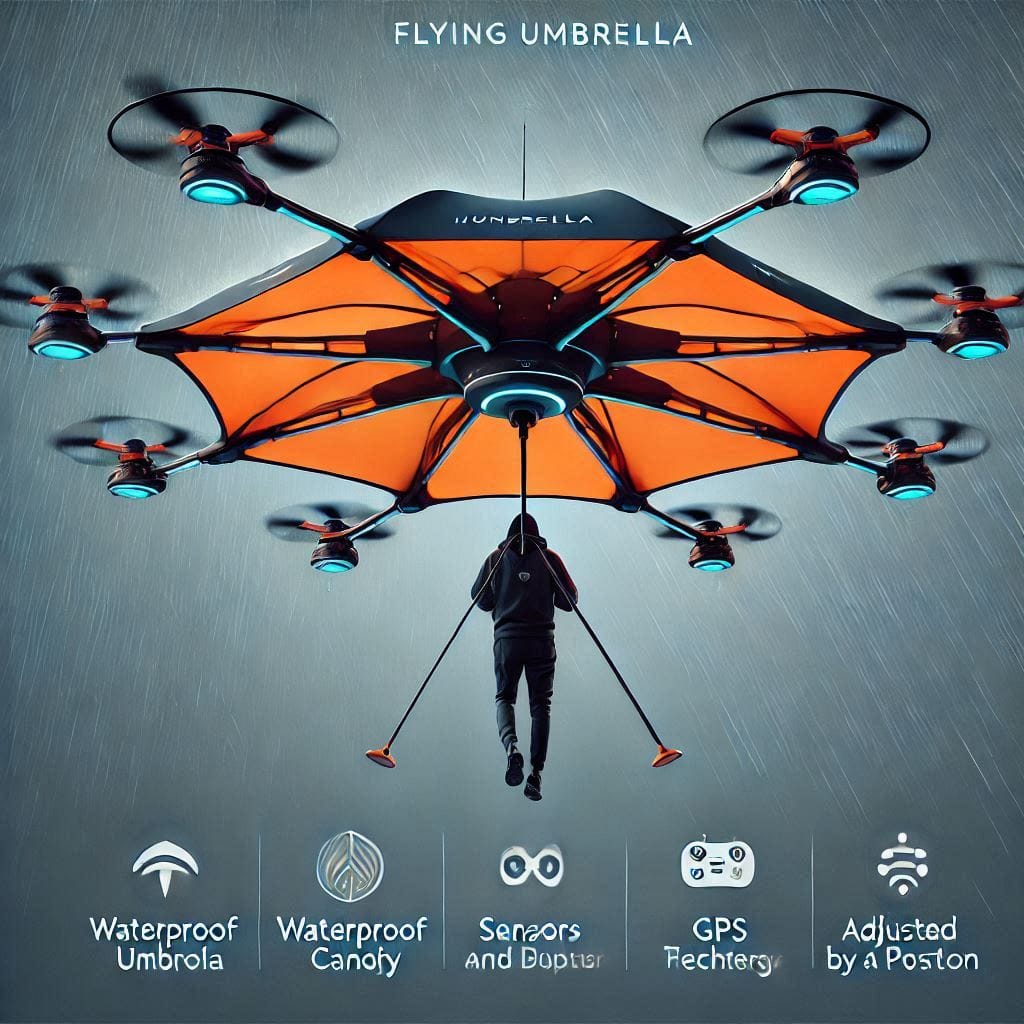
While undeniably innovative, this invention raises questions about over-engineering. Critics argue that a simple handheld umbrella accomplishes the same task without the added complexity of drones. Nevertheless, its futuristic appeal and novelty make it one of the most intriguing weird gadgets.
Flying umbrellas are currently available in niche markets, particularly in tech-forward countries like Japan and South Korea. While they haven’t achieved mainstream adoption, they have garnered attention at tech expos and among gadget enthusiasts. These niche futuristic ideas may pave the way for more practical drone applications in the future.
The Butter Stick: Convenient or Confounding?
The Butter Stick, a kitchen tool modeled after a glue-stick container, is one of the most peculiar weird inventions that actually exist. Its simple yet unconventional design allows users to spread butter by twisting a knob and applying it directly to bread or pans.
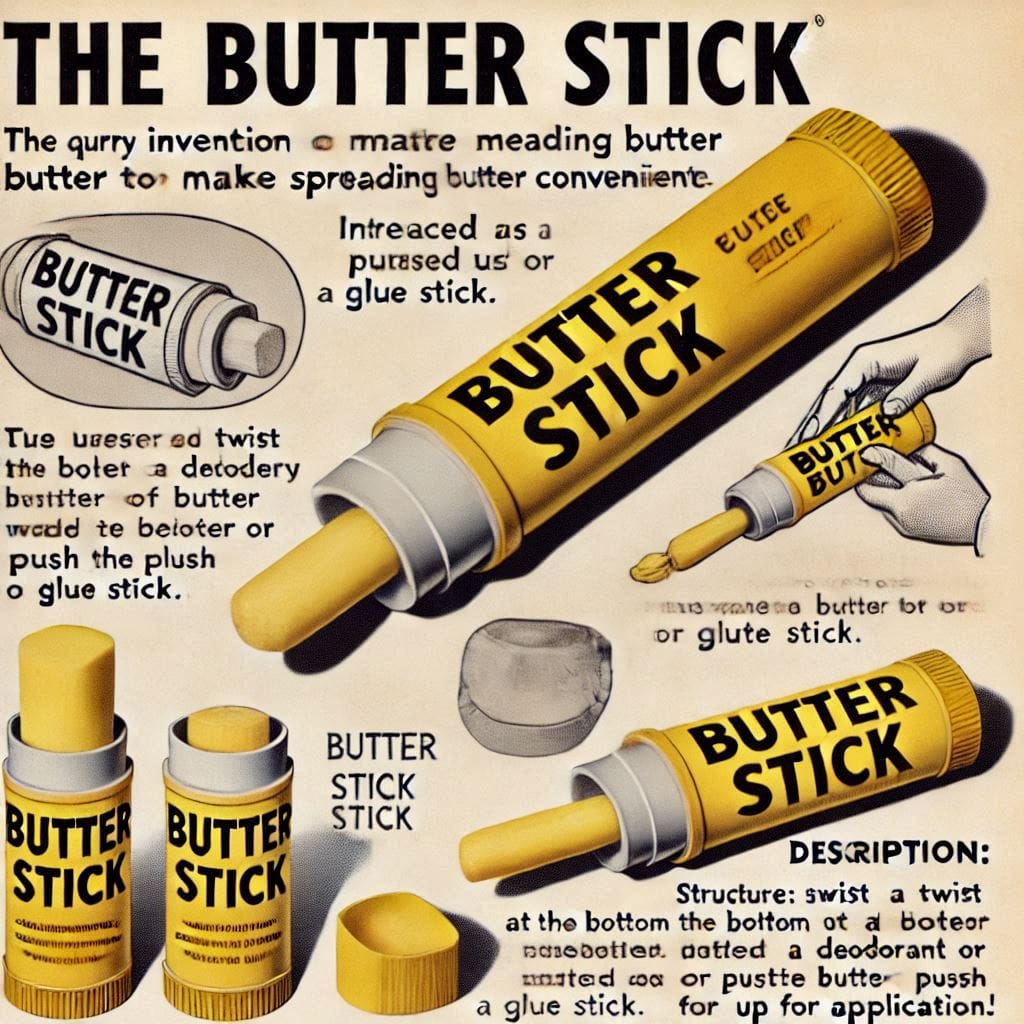
The Butter Stick solves a minor inconvenience—spreading butter—by adding a layer of humor and innovation. However, its quirkiness also highlights its impracticality. The device’s design doesn’t accommodate larger portions of butter and can feel unnecessary for those accustomed to traditional butter knives. Despite its limited practicality, the Butter Stick gained viral attention online, celebrated as one of the most amusing quirky kitchen tools. However, it remained a novelty item, appealing more as a gag gift than a serious kitchen gadget.
Cultural Impact
As one of the more memorable failed yet innovative ideas, the Butter Stick exemplifies how humor and creativity can still leave an impact, even if an invention doesn’t achieve commercial success.
Portable Fish Tanks: A Home Away from Home
Portable Fish Tanks, a bizarre yet imaginative concept, allow pet owners to carry their aquatic companions wherever they go. As one of the most head-turning weird inventions that actually exist, these wearable tanks serve as both a fashion statement and a conversation starter.
Portable fish tanks are crafted from lightweight, transparent materials, often resembling a backpack or handbag. Equipped with a small water filtration system, they provide the necessary conditions for fish to thrive, albeit temporarily.

The impracticality of wearing a fish tank makes it one of the most quirky pet gadgets ever conceived. Not only does it raise questions about the fish’s comfort and safety, but it also poses logistical challenges for the owner, including water spills and tank maintenance.
Fun Fact and Popularity
Despite its eccentricity, the portable fish tank has found a niche audience among aquarium enthusiasts. Some people use it as a playful way to showcase their passion for marine life. While it hasn’t gained widespread adoption, its uniqueness ensures it remains an unforgettable part of unusual historical inventions.
The Rainy Day Cigarette Holder (1930s)
The Rainy Day Cigarette Holder, a peculiar gadget from the 1930s, reflects the ingenuity and eccentricity of weird inventions from the past. This unique device was designed to allow smokers to enjoy their cigarettes without them getting extinguished by the rain.
Description and Functionality
The gadget consisted of an elongated cigarette holder encased in a protective covering, with an opening for inhaling smoke. Its waterproof casing ensured that users could smoke even in the wettest conditions.

The invention catered to an extremely specific need: keeping cigarettes dry in the rain. While it addressed a practical issue for smokers, its niche appeal and overly specific purpose positioned it firmly among strange societal gadgets.
Historical Insight
The device emerged during the 1930s, a time when smoking was deeply ingrained in social culture. It reflected an era when innovative solutions were applied to even the most trivial problems. Despite its quirky design, the Rainy Day Cigarette Holder exemplified the early push toward niche futuristic ideas, demonstrating creativity in everyday problem-solving.
Pet Translators: Decoding Bark and Meow
The idea of pet translators—devices claiming to decode animal vocalizations into human language—has captured the imagination of pet owners and technologists alike. As one of the more exciting weird inventions that actually exist, these AI-based gadgets aim to bridge the communication gap between humans and their pets.
Description and Technology
Pet translators use artificial intelligence to analyze vocal patterns, tones, and body language in animals. By comparing these to a database of pre-defined emotional or behavioral cues, they attempt to translate a bark, meow, or chirp into understandable phrases like “I’m hungry” or “Let’s play.”

The concept is both fascinating and strange. While the idea of understanding pets’ thoughts has universal appeal, the accuracy of these devices is often questioned. Skeptics point out that animal communication is far more nuanced than a simple database can interpret, yet the potential is undeniably exciting.
Modern Developments and Popularity
As technology advances, so do these devices. Modern pet translators continue to evolve, integrating features like smartphone apps and machine learning algorithms. With the rise of weird gadgets in the pet tech industry, these devices appeal to owners who are eager to better understand their furry companions.
Future Potential
Though not yet scientifically robust, pet translators represent unconventional breakthroughs in technology. They inspire research into animal behavior and communication, hinting at a future where human-animal interaction could reach unprecedented levels of understanding.
The Mechanical Chess Player: 18th-Century AI
The Mechanical Chess Player, or “The Turk,” was a fascinating automaton created in the 18th century. Initially believed to possess an artificial intelligence capable of playing chess, it turned out to be one of the most famous hoaxes in history. This invention epitomizes weird inventions from the past, blending mechanical ingenuity with deception.
Constructed in 1770 by Wolfgang von Kempelen, the Turk resembled a life-sized figure dressed in Ottoman attire, seated behind a cabinet containing an elaborate mechanism. It was capable of moving chess pieces on its own, seemingly challenging and defeating prominent players of its time.

The Turk was not powered by advanced mechanics or early AI but by a hidden human chess master concealed inside the cabinet. Its ability to win matches gave the illusion of intelligence, leading to widespread fascination and speculation. This mix of deceit and innovation makes it one of the most unusual historical inventions.
Legacy
Although the Turk was ultimately a hoax, it played a significant role in inspiring the advancement of true automation and artificial intelligence. It laid the groundwork for future innovations in chess computing, eventually leading to modern AI systems like Deep Blue and AlphaZero. As one of the most intriguing forgotten inventions from history, it underscores humanity’s enduring desire to replicate intelligence through machines.
Toilet Paper Roll Hat: Hygiene Meets Fashion
The Toilet Paper Roll Hat is an amusing blend of utility and humor, representing a quirky attempt at merging hygiene with convenience. As one of the top 10 weird inventions, it has earned its place in the annals of odd creativity.
This invention consists of a headband designed to hold a roll of toilet paper, ensuring that users have easy access to tissues whenever they need them. The idea is to eliminate the hassle of carrying tissues separately, making the roll conveniently available on top of the head.
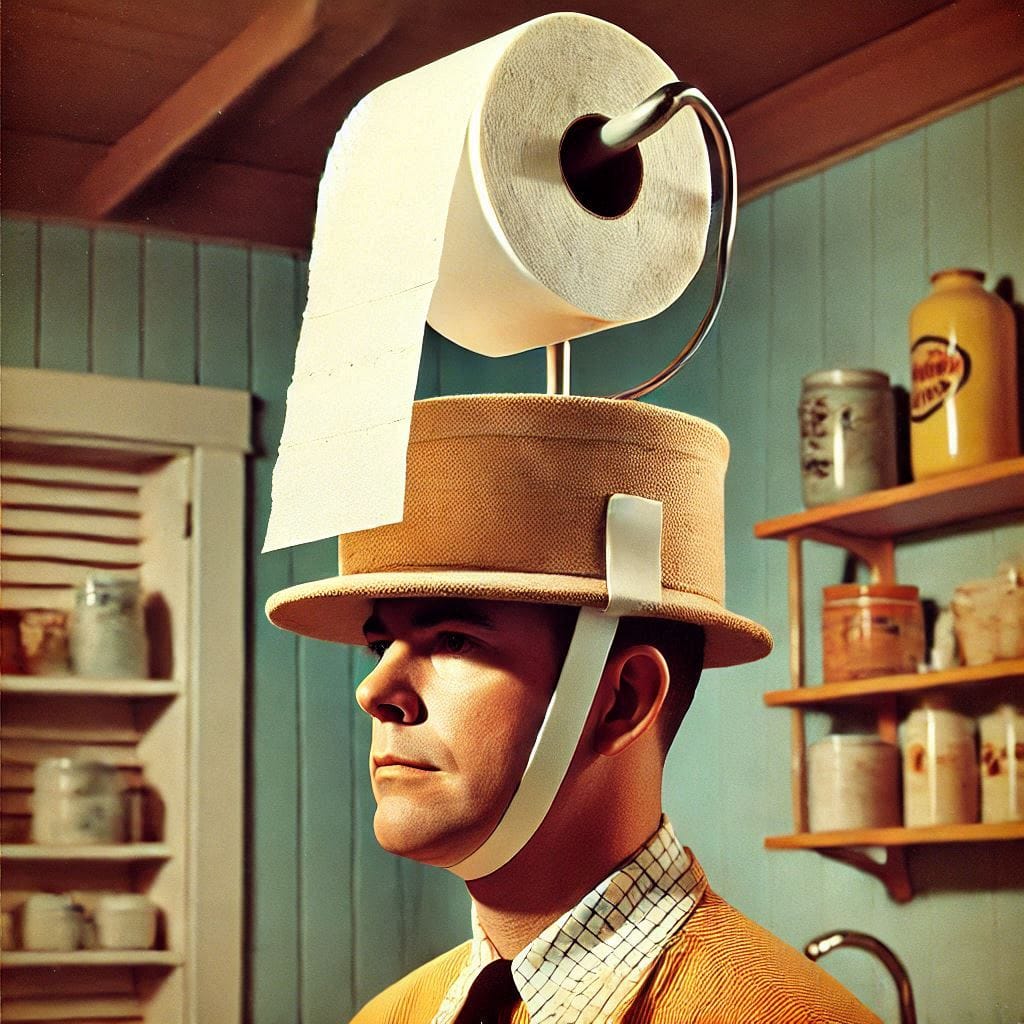
While it solves a minor problem, the design’s impracticality makes it more of a gag than a practical tool. Walking around with a roll of toilet paper on your head is hardly fashionable, but it demonstrates a creative, albeit humorous, approach to problem-solving. The Toilet Paper Roll Hat became popular as a novelty item, particularly as a gag gift. It has been marketed as a humorous solution to minor inconveniences, appealing to those with a taste for quirky humor and bizarre contraptions.
Legacy and Cultural Impact
Though it hasn’t revolutionized hygiene, this strange societal gadget serves as a reminder of human creativity’s lighthearted side. It continues to make appearances in viral gift lists and quirky product compilations, symbolizing the intersection of utility and amusement in invention.
Why Do Weird Inventions Matter?
Weird inventions are much more than quirky oddities—they offer valuable insights into human creativity, societal norms, and technological evolution. Each bizarre creation reflects a unique blend of innovation and cultural influence, showcasing humanity’s endless pursuit of solutions to challenges both big and small.
Creativity and Societal Quirks
Weird inventions reflect our boundless creativity and capacity to think beyond conventional boundaries. They often arise from attempts to address niche or specific needs, however peculiar they may seem. These ideas can serve as cultural time capsules, capturing societal priorities, humor, or eccentricities during their time. For example, the Toilet Paper Roll Hat reflects a playful approach to solving minor inconveniences, while inventions like the Rainy Day Cigarette Holder echo the social habits and trends of the 1930s.
Inspiration for Groundbreaking Technologies
Some unconventional breakthroughs and niche concepts, though initially dismissed, have inspired innovations that shape modern life. For instance, early inventions like the Radio Hat paved the way for today’s wearable technologies. Similarly, quirky experiments with automation, such as the Mechanical Chess Player, foreshadowed the rise of artificial intelligence. These examples highlight how seemingly impractical ideas can spark revolutionary advancements in unexpected ways.
Weird inventions also challenge norms, encouraging out-of-the-box thinking. Even when they fail, they contribute to a culture of experimentation that pushes the boundaries of innovation.
Conclusion
Weird inventions, whether hilarious or ingenious, remind us of humanity’s inventive spirit and ability to find joy in problem-solving. From the absurd practicality of the Butter Stick to the technological ambition of Flying Umbrellas, these creations balance humor, curiosity, and creativity.
Which of these weird inventions surprised you the most? Share your thoughts in the comments! Let us know if you’ve come across any unconventional breakthroughs or niche futuristic ideas worth exploring.
If you enjoyed this collection of peculiar creations, share it on social media to spread the joy—and perhaps inspire the next bizarre yet brilliant invention!
Explore the below Interesting Articles:






